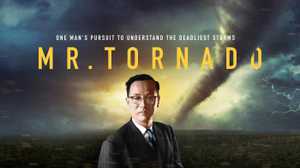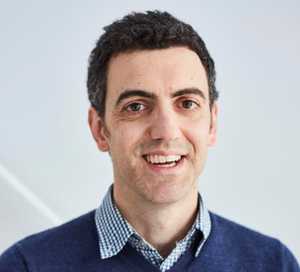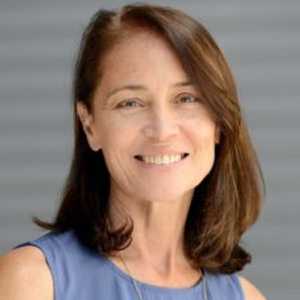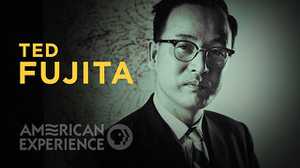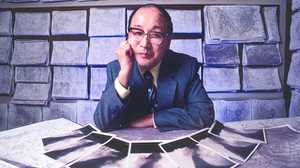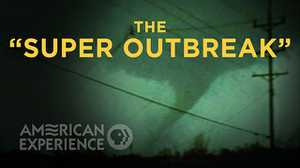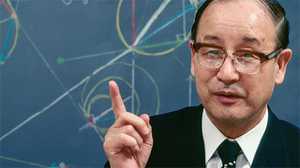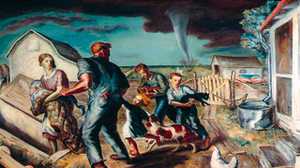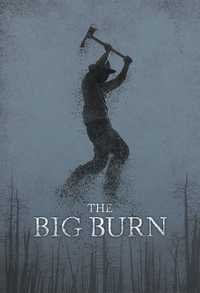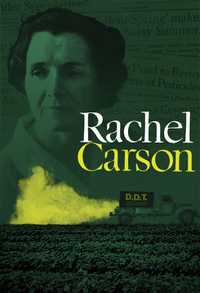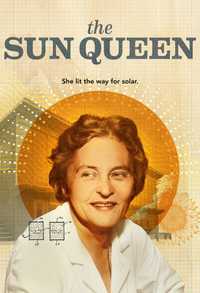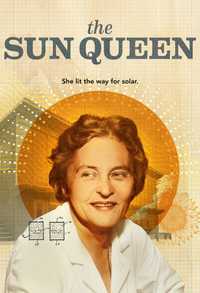Prologue, The Belly of the Beast – April 3-4, 1974
Woman’s voice: Sounded like a train, but I knew it wasn’t. And, it just hit.
Woman with bandana, crying: We were right underneath the front of it. I’ve never seen anything like it and I don’t want to again.
Woman in glasses: Then I just said, “Lord, if it’s time for me to go, well I, I have to say that it’s my time to go.”
VISUAL: aerial of tornado damage, emergency personnel
On April 3rd, 1974, scores of tornadoes tore across 13 states in the center of the country, leaving a massive path of destruction. First responders in cities and rural areas were overwhelmed.
NEWSREEL: We’ve got about forty or fifty people injured this side of town…
GREGORY S. FORBES, Meteorologist: There was tornado after tornado after tornado. As the day unfolded, it became clear that this was going to be an historic day.
Hundreds died, and thousands lay injured from the Great Lakes Region to the Deep South. The shock of the unprecedented outbreak left Americans struggling to comprehend what Mother Nature had wrought.
VISUAL: Photograph of Tetsuya Fujita in tornado aftermath
One scientist took on the challenge of understanding what he would later call the “Super Outbreak.” Tetsuya Theodore Fujita, a professor of meteorology at the University of Chicago, was determined to make sense of the chaos.
NANCY MATHIS, Writer: He was a detective looking for clues and no detail should go unturned. The Super Outbreak was one huge crime scene.
VISUAL: Footage of Fujita in the field
FUJITA: We do research on tornadoes. And in case of future tornadoes, you know, what people should do, that’s the kind of thing we want to find out. Right after the storm…
The scene in America’s heartland was all too familiar to Fujita. Three decades earlier, he had sought out answers amidst devastation in Nagasaki and Hiroshima—sifting through the rubble created by the world’s first atomic bombs.
MARK LEVINE, Writer: After the Second World War he came to the US and he began a relentless pursuit of studying the after effects of severely destructive forces.
His unique forensic approach to meteorology was unorthodox, and would transform the understanding of one of Nature’s most powerful phenomena.
ROBERT F. ABBEY, JR., Colleague: Fujita was able to utilize his insights, his ingenuity, and give us knowledge about phenomenon, which we thought was unknowable.
Nagasaki
VISUAL: Archival footage of Japanese seaside town, B-29 bomber in clouds
In the late morning of August 9, 1945, in northern Kyushu, Japan, a twenty-four year old Tetsuya Fujita quickly led his students toward an underground air raid bunker. The young professor glanced at the sky, but a thick layer of clouds obscured the aircraft…a B-29 Superfortress laden with a single atomic bomb.
MATHIS: The primary target was three miles from where Fujita was. The bomber actually made three attempts to drop its load. It could not get a visual because of the clouds, so they ended up going to their secondary target, which was Nagasaki. The cloud cover over his city really spared his life.
At 11:02am, the B-29 dropped an atomic bomb on Nagasaki.
VISUAL: Carnage at Nagasaki
Thousands of buildings and homes were instantly destroyed. The flash radiation of heat from the blast scorched hillsides as far as 8,000 feet away from Ground Zero.
FORBES: About a month later, Fujita was asked, as part of a team, to go out and look at the damage pattern around Nagasaki and Hiroshima to see if they could determine exact location of where the bomb detonated and the altitude of the detonation.
After closely examining the debris, Fujita and his colleagues calculated that the bomb had exploded 520 meters above the ground. But what intrigued Fujita more was the curious pattern left by the blast.
The blackened trees directly below the explosion stood upright, while those radiating out from Ground Zero fell away horizontally in a starburst pattern. As he studied the damage, Fujita imagined the airflow from the blast descending rapidly and fanning outward upon contact with the ground, toppling the trees.
ROGER WAKIMOTO, Atmospheric Scientist: This was his first really comprehensive damage survey. It wasn’t meteorological, but some of his early understanding of how to do a damage survey, those seeds were planted during these surveys of these two atomic bombs.
In the ashes of Nagasaki and Hiroshima, Fujita realized that the rubble told a story beyond the tragedy of death and destruction.
A Curious Beginning
VISUAL: Original footage CU tidal waters over sand, CU young hands digging in sand, photos of Fujita
Tetsuya Fujita had always explored the natural world with a fearless curiosity. As a young boy in Japan, he had studied astronomy to master tidal patterns and avoid being stranded at sea while hunting for clams. His father, a schoolteacher, encouraged his inquisitive nature despite his reckless behavior.
VISUAL: Archival footage typhoon hitting Japan
“I thought I could measure wind,” Fujita recalled. When a typhoon came “my father found I was standing on top of the roof.”
LEVINE: Even as a child and even in a society as collectivist as pre-war Japan, he emphasizes his independent strain of mind. Someone who wasn’t willing to do things the way the teachers expected him to do them but who might have known better.
VISUAL: Photo Fujita age 19
In 1939, at the age of 18, Fujita departed from his boyhood home for the Meiji College of Technology to study engineering. There, he continued to pursue his passion for amateur meteorological experiments, hopeful for a life filled with scientific research in his beloved homeland. But after the atomic bombs dropped on Japan, everything changed for Fujita.
VISUAL: Archival footage showing streets of Japan
MATHIS: After World War II ended, Japan’s economy was absolutely devastated. He was an assistant professor, but there was no research going on. Just surviving was a struggle. One of the things he did to get extra money was he applied and received a grant to do science maps, weather maps for local school teachers.
Working with atmospheric data provided by local weather stations, Fujita created detailed maps that revealed something other scientists overlooked. His maps provided far more information about localized conditions than the larger pressure fronts illustrated as smooth curves in textbooks. “In the 1940s and ‘50s, people would smooth out those bumps and wiggles,” a former student recalled, “Fujita said, those bumps and wiggles mean something.”
Thunder-Nose
VISUAL: contemporary footage of Seburi-yama Mountain during a thunderstorm
Fujita decided to address this gap in knowledge by collecting his own atmospheric data in the heart of a thunderstorm atop the 3,500-foot peak of Seburi-yama Mountain. Lightning and fifty mile per hour gusts rolled past as he carefully measured air pressure, temperature, and wind speed.
WAKIMOTO: Most researchers at that time were sort of looking at things across the planet. They were looking at things like these huge cold fronts and warm fronts. And he said, “No. I want to study thunderstorms. I want to study very localized phenomena.” That was very counter to the prevailing research at the time.
FORBES: Instead of taking the observations once an hour for these large-scale weather systems, he would collect the data more frequently than that. He began to see that there were some pressure anomalies inside the thunderstorm that led him to hypothesize that there were downdrafts— down flowing air currents in the thunderstorm. Fujita was reading between the lines, seeing and developing a whole new scale of meteorology.
Fujita presented his downdraft theory at numerous conferences in Japan, but his peers showed little interest. After one of his talks, however, someone handed Fujita a report authored by a leading American meteorologist studying thunderstorms with a similar focus.
FORBES: There was a US military base there and someone had picked up out of the garbage a paper that Dr. Horace Byers of the University of Chicago had written in 1942 about non-frontal thunderstorms.
ABBEY, JR.: So Fujita reads the paper and says, “Ah, this is what I’ve been working on. I must write this man.”
VISUAL: Archival footage of Thunderstorm Project field work
After World War II, as the commercial airline industry began to expand, thunderstorms posed a serious threat to passenger safety. A series of storm-related plane crashes prompted Congress to launch a multi-agency study that became known as The Thunderstorm Project. The Weather Bureau selected Horace Byers as director, with the hope that a deeper understanding of thunderstorms would lead to safer air travel.
FORBES: They had field experiments in Ohio and in Florida using aircraft, using radar, using surface stations, using weather balloons. And they had measured all sorts of phenomena within thunderstorms.
One of the major findings identified by Byers and his colleagues was the significant role of the thunderstorm downdraft: the exact same phenomenon Fujita had so carefully documented during his thunderstorm studies in Japan.
WAKIMOTO: Fujita was coming up with the same conclusions as a major US-sponsored field experiment, which had many aircraft, many scientists and students in the field studying this phenomena, and here was this lone Japanese scientist out in the mountains of Japan coming up with similar conclusions.
From Kokura to Chicago
VISUAL: January 30, 1951 letter from Byers to Fujita
In 1951, desperate for a way out of Japan and a post-war economy that offered few job prospects, Fujita took a gamble. He spent his savings on an English-language typewriter and mailed a copy of his research to Horace Byers. In his reply, Byers offered Fujita the chance of a lifetime: an invitation to help with his weather research in Chicago.
VISUAL: Pan-Am flight, Fujita’s charting of clouds during his flight to America
Aluminum suitcase in hand, Fujita boarded a plane for the first time in his life and headed for the United States. He excitedly plotted his journey by sketching the clouds—towering cumuli at takeoff; orange tropical cumuli over Hawaii; a deck of stratus above San Francisco Bay.
VISUAL: Busy streets of 1950s Chicago, University of Chicago campus
LEVINE: Fujita arrived at the University of Chicago in a post-war America that was booming and that was expanding culturally, scientifically, economically, in enormous ways.
FORBES: The University of Chicago had top-flight people in just about every field of meteorology. It must have been a pretty daunting environment for a Japanese person to be coming for the first time to the United States. This was not very long after World War II. I’m sure there was a lot of anti-Japanese resentment.
WAKIMOTO: Fujita had to prove himself when he came here. He wasn’t a trained meteorologist. He was an engineer. His English wasn’t the best. He claimed that all the university gave him was a desk and a pencil, and then he had to do everything on his own.
Fujita immersed himself in his work, eager to impress Byers with his skillful analysis of thunderstorms in the American Midwest. Soon, Fujita grew fascinated with the most mysterious of severe storms: tornadoes.
Tornadoes in America
VISUAL: Beautiful footage of tornadoes dancing across Midwest
FORBES: The central part of the United States, from the Pioneer Era right to the present, has been known to be the place on Earth that is most frequently visited by the strongest of tornadoes. Anywhere from the front range of the Rockies to the Appalachians and across the southeast can get, upon occasion, some very long-lived destructive, violent tornadoes.
Apart from knowing where they were most likely to occur, meteorologists understood little about the behavior of these incredibly destructive phenomena.
The rapidly spinning vortex with air rising from its base and exiting at the top of its funnel represents one of the most violent weather phenomena on Earth. For those who survive them, tornadoes often serve as the demarcation of their life.
LEVINE: The terror of the tornado is that it can upend your life in an instant. There’s very little warning. It can enact a kind of total destruction that few other things can. Tornadoes occupy a place in our minds, even our contemporary, scientific, and technically sophisticated minds, that is akin to magic.
VISUAL: archival footage of tornadoes, meteorologists at work
Ever since Benjamin Franklin chased what he called a “whirlwind” into a Maryland forest in 1754, scientists have struggled to explain the nature and structure of tornadoes. Early theories ranged from a central vacuum sucking air upward to the heavens, to steam power or electricity providing the storm’s generative force. Some even proposed firing cannonballs through funnel clouds to let the air out.
MATHIS: From the late 1800s until the 1930s the Weather Bureau wouldn’t even say the word tornado in its forecast. There was the idea that people would overreact and panic if there was a tornado warning. So our knowledge was very limited. What they did know was that tornadoes were killing a large number of Americans.
VISUAL: Tornado educational reel 1950s
NEWSREEL: No one knows all the facts about tornadoes, but meteorologists can detect...
FORBES: When Dr. Fujita came to the United States there was not much known about tornadoes and a lot of what was published or taught was wrong. You could see in encyclopedias that the tornado wind speeds were the speed of sound. There was all sorts of misconceptions.
NEWSREEL: The exact location of the tornado was flashed to the nearest radar station…
FORBES: By 1953 storms that were producing tornadoes had been seen on radar, and they were seen to have a distinctive pattern.
In the coming years, the National Weather Service would begin creating a network of radar stations across the country to help detect tornadoes. The resulting flood of new data would be a gold mine for the young Fujita and he would apply it in ways that had never been done before.
Fargo
NEWSREEL: A hungry sky closes in on Fargo, North Dakota. A tornado about to hit…
In the late afternoon of June 20, 1957 a ferocious tornado ripped through the metropolitan area of Fargo, North Dakota.
VISUAL: Archival color footage of damage, car driving through streets of Fargo
NEWSREEL: “…all together some 100 blocks were affected by the storm. Fire and police officials were on the scene quickly…”
Byers immediately dispatched Fujita to learn more.
Working with a local TV weatherman Fujita called upon residents to submit their personal photos of the storm. The young Japanese scientist then interviewed eyewitnesses to collect their first-hand observations. He found they were just as interested in him as they were the research he was conducting. “When I went out there,” he said, “Some asked, ‘Where is Japan?’…They asked me what I was doing. ‘I’m studying tornadoes.’”
Fujita soon collected nearly 200 images of the storm—blurry pictures of flying debris to most people, a treasure trove of data to Fujita.
FORBES: Fujita gathered photographs from 53 different locations. Someone has taken a picture of the tornado here looking one direction; another person at the same time has taken a picture looking from another direction.
LEVINE: He very meticulously identified the location from which each shot was taken. He corrected for the differences of perspective and he was able to put together a single narrative of the tornado.
VISUAL: Footage from Fujita’s SMRP film about Fargo Tornado
After two years of painstaking analysis, Fujita assembled the first motion picture depicting the entire life cycle of a tornado and what Fujita named its rotating “parent” cloud, or supercell thunderstorm.
FORBES: Out of Dr. Fujita’s studies of the 1957 Fargo tornado came terms that are still used. Wall cloud: the low hanging cloud that is the rotating updraft portion of the storm, the tornado often drops down near the edge or right underneath that. Collar cloud: little ring around the wall cloud. Tail cloud: horizontal tube that comes in from the edge of the storm and gets picked up in the updraft. It was one of the masterful studies of all time for severe weather meteorology.
Fujita’s research declared that tornadoes were not random, but instead occurred as the result of “well organized conditions.” Having proved that tornadoes could indeed be approached and studied, he was more determined than ever to unlock the mysteries of what caused these severe storms.
A New Perspective, 1960s
VISUAL: POV footage from a Cessna aircraft through clouds over tornado damage
LEVINE: Fujita knew that he needed a way to study tornadoes independent of that chance event of having a lot of people supply photos; that the tornado would provide its own clues.
In 1965, Fujita began chartering low-flying Cessna aircraft in order to get to the aftermath of tornadoes as quickly as possible. Thrilled by his new vantage point, he spent hours scouring the landscape for evidence, snapping thousands of photographs.
LEVINE: He is able to look at tornadoes’ destructive paths, and he’s able to detect moment by moment changes and fluctuations in the behavior of the tornado that leads to an understanding that a tornado is not just a thing, but a tornado is rather a process, a kind of living, moving, changing dynamic event.
On some of his surveys, Fujita noticed peculiar circular patterns across the main tornado funnel path. Meteorologists believed that these gouge marks were caused by the tornado dragging heavy objects along the ground. But Fujita had a different theory.
FORBES: Dr. Fujita saw that these weren’t scratches, they were piles of debris that were left behind. Usually it was piles of corn stubble that were about six inches or twelve inches deep. He began to hypothesize that there were spots of maybe low pressure in the tornado that like vacuums were sucking in the corn stubble. He proposed that they were tornadoes within the tornado, multiple suction vortices.
If correct, Fujita’s theory explained a phenomenon that had vexed weather researchers for decades: why one house could be destroyed during a tornado while one next door would be left untouched.
WAKIMOTO: This was an enormous leap of faith because at that time, there was no photograph of this occurring. And so he was immediately criticized and the first thing that came out of people’s mouth is, “Well, show me a picture of this.” Well, he had no picture. And this played out in many conferences where they would literally argue with each other. You would just see these battle royals, of one saying that you’re wrong, and Ted would stand up and say, “No, you’re wrong.”
Fujita met his critics head-on, confident that he would one day prove his theory. “Not to have seen something,” he asserted, “does not mean that such a thing does not exist.”
Idea Man
VISUAL: Archival footage of University of Chicago campus
Fujita’s bold theories were earning him a reputation as the idea man of the meteorological community. At the University of Chicago, he became a full Professor of Meteorology and director of the newly created Satellite and Mesometeorology Research Project, or SMRP. He wrote prolifically about severe weather. But the method he used to disseminate his unorthodox ideas was controversial.
WAKIMOTO: Fujita had very little patience. When he finished doing research, he wanted it to hit the street immediately. He could not wait months and months and months. If you look at his publication record, he does not have a lot of publications in the peer review literature, but what he does have is hundreds of publications in SMRP because he had total control over that. This was his publication.
ABBEY, JR.: The downside to it was almost anything and everything that could be written or summarized quickly were in those reports. They were very uneven quality. Ted felt he didn’t need a review process. He was merely reporting what was observed, what was documented, as far as Fujita was concerned.
VISUAL: Map of Fujita’s road trips, photo of Fujita working
Fujita struggled to balance work with family. He took lengthy road trips with his wife and young son in their 1951 Mercury, visiting every state except Rhode Island. These family vacations never interfered with his absolute dedication to his research.
WAKIMOTO: He had one son, but I think, even he would say that they didn’t have the closest relationship. Work was everything. He worked night and day, and family was, I think, to be honest, was secondary.
VISUAL: Photograph of Fujita’s second wedding
In 1968 Fujita was divorced from his wife of 20 years, but he soon remarried. He also became an American citizen and gave himself the middle name Theodore. His closest friends called him Ted.
Though he remained nostalgic for his childhood in Japan, Fujita understood America held his fortunes. “I never felt, until I got my citizenship…that I would stay here forever,” Fujita recalled, “It was a very mixed feeling.”
Incredible Phenomena Can Occur, 1965-1974
VISUAL: aerial photographs conveying different tornado damage
Fujita’s scrupulous analysis of the many aerial photographs he had collected convinced him that not all tornadoes were created equal. Some caused extreme damage, others very little at all. In 1971 Fujita set out to classify these variations in tornado intensity. He decided to create a six-point scale—and named it after himself.
In the Fujita Scale an F0 signified wind speeds up to 72 mph causing “light damage.” An F5 was the most powerful tornado with winds up to 318 mph. Evidence of an F5 included strong frame houses ripped from their foundations, debarked trees, and cars flying through the air. With an F5, Fujita proclaimed, “Incredible phenomena can occur.” Anything beyond an F5 would be inconceivable.
Critics challenged his method of estimating wind speed. Undaunted, Fujita aggressively advocated for the acceptance of his tornado intensity scale.
VISUAL: Footage of Fujita presenting at chalkboard, Fujita’s tornado machine
FUJITA: It’s very difficult to compute the wind speed because tornadoes swirl very fast…
He believed that devising a way to quantify tornado damage was a critical first step towards understanding their tendencies.
FUJITA: …around here and moved pretty fast.
REPORTER: If we were to just look out that window and I was to say, “There’s a tornado,” what would your reaction be?
FUJITA: I would grab a camera and go up to the roof…
Fujita’s confidence and charm won over reporters, who soon dubbed him ‘Mr. Tornado.’
FUJITA: Try to pinpoint which particular thunderstorm might produce tornado…
LEVINE: Fujita proudly built this little fiefdom at the University of Chicago and hosted a stream of guests to his laboratory where he had built a tornado simulation device and would regale them with his trove of documents about disaster. He was interested in gaining a high profile for the kind of research he did and for himself. But for the F-Scale to take hold in the popular imagination, there was some need for a really high-profile tornado event and that’s what Fujita got on April 3rd and 4th of 1974.
Super Outbreak, April 3-4, 1974
VISUAL: Archival footage of Americans starting their day
April 3rd, 1974 dawned like any ordinary day. Americans across the Midwest bought their morning paper to catch up on the Patty Hearst kidnapping and President Nixon’s tax troubles. While forecasters were predicting scattered thunderstorms, the unseen atmospheric forces above the heart of America were inching perilously towards volatility.
VISUAL: Footage of hail on prairie land, tornadoes forming, teletype
At 11am, the heavens opened up. Baseball-sized hail broke windows and tree limbs in central Illinois. At 12:10pm, the first tornado of the day touched down, damaging some billboards in Morris, IL. By two o’clock a tornado struck Decatur, killing an elderly man in his mobile home while seriously injuring his wife.
FORBES: As the day unfolded and we were running back and forth to the teletype that was spitting out the reports and the warnings…
ANNOUNCER: The thunderstorm warning has been changed to a tornado warning for Metro Louisville Jefferson County…
FORBES: …we’re seeing that, oh, there’s just storms everywhere. It’s even bigger area than we expected it to be. We’re getting Fujita excited at that point—he’s pumped.
VISUAL: Archival footage of tornadoes day of Super Outbreak
Sirens blared in the few towns equipped with warning systems…
ANNOUNCER: …we have a touchdown 58 miles west…
Even then, residents barely had time to take cover.
LEVINE: You literally had people all over the country driving their cars off to the side of the road and jumping in ditches to try to get out of the paths of these tornadoes.
People watched in horror as more tornado funnels formed…until darkness fell, when they could no longer see the devils approaching.
LEVINE: There were people who lacking a basement, took shelter in the bathrooms of their houses and were found dead in bathtubs. There were people who did what you’re supposed to do and rushed to their basement who were found dead in the rubble of their basement.
While the tornadoes continued to rage into the next morning, Fujita scrambled to assemble Cessna crews so he could survey the damage before it was too late.
Death is in the details
VISUAL: people picking up the pieces, Fujita’s tornado hand-written questionnaires
LEVINE: The human tendency in response to destructive events is to clean things up right away. Fujita thought that the site of tornado damage was something like a crime scene, and he wanted the evidence to be preserved because he believed that it held the key to unlocking the meaning and dynamics of these storms.
FORBES: I was a graduate student of Dr. Fujita’s at the time. Fujita gave a little bit of coaching, but I was filled with a mixture of excitement and a little bit of nervousness. We were asking people to tell where they were and what happened. There was just so many tornadoes, we needed help from the public in terms of getting as much information as we could.
LEVINE: People are really in a state of shock. When they encountered a person who’s asking questions that seemed not to address their welfare, my sense is that there was often a certain confusion, like, “What’s going on?”
FORBES: I think it’s important to point out though that we’re scientists. There’s nothing that we can do to fix what nature has wrought. So it’s our job to be out there just trying to document what has happened. We can’t be tearing up and so on over—we’ve just got to be doing our job and then maybe having some nightmares about it afterwards.
Crisscrossing the country, Fujita flew over 10,000 miles in his Cessna, documenting the damage first hand. But his work had only just begun.
VISUAL: photos, maps, drawings of Fujita’s Super Outbreak research
The evidence he and his staff gathered would become part of the most sophisticated tornado study Fujita had ever attempted. Through thousands of photographs, radar and satellite imagery, maps, and first-hand accounts, Fujita pieced together the enormity of what transpired in those two days in April. Then, he rendered it in chilling detail in a hand-drawn map.
Three hundred and fifteen deaths and 5,484 injuries charted against time, location, and demographics; 2,598 miles of damage paths carefully traced and adorned with changing F-Scale classifications. Fujita calculated that a total of 148 tornadoes had torn through 13 states in a 17-hour period. He named this extraordinary occurrence the ‘Super Outbreak.’
FORBES: He really nailed it in terms of documenting the worst tornado outbreak in the United States at that point. The Super Outbreak set in stone permanently Dr. Fujita’s legend as Mr. Tornado.
VISUAL: Archival film of dancing vortices in Xenia
Fujita also gathered evidence that had eluded him for years. Footage shot in Ohio and Indiana showed the multiple suction vortices Fujita envisioned from circular marks in cornfields years before.
WAKIMOTO: And then, all the criticism stopped, and people said, “Gosh, we see it now. You’re right.” And so he was vindicated.
Fujita’s Super Outbreak research became an indispensable resource for future tornado risk assessment and climatology studies. More importantly for Fujita, his F-Scale was emblazoned in the minds of Americans.
WAKIMOTO: Before the creation of the F-Scale, you would just say, “Oh, that was a strong tornado.” Now, if you say, “That was an F5 tornado,” you have an immediate picture because with the F-Scale, Fujita had all these images of what that damage would look like. That was a brilliant maneuver by Ted Fujita.
By 1975, Fujita was hailed as the nation’s premiere tornado researcher. His years of expertise would soon be tested in a way he had not foreseen.
Eastern Airlines Crash, June 24, 1975
VISUAL: NBC Nightly News report, John Chancellor at desk with NYC map
NBC ANNOUNCER: This is NBC NIGHTLY NEWS Tuesday, June 24th with John Chancellor.
JOHN CHANCELLOR: Good Evening. More than one hundred people were reported dead in a plane crash near New York’s Kennedy airport this afternoon. Eastern Flight 66 was on what appeared to be a normal approach when it either exploded in the air or dove into the ground. Accounts differ. It was raining heavily at the time, when the plane hit the ground parts of it skidded across a highway filled with rush hour traffic, smashing cars.
VISUAL: Archival footage of Eastern Airlines flight 66 wreckage near JFK airport
It was the deadliest single-plane crash in US history to that day. The ensuing National Transportation Safety Board report cited normal thunderstorm activity at the time of the accident, suggesting pilot error was the cause of the crash. Yet still, questions remained. Eastern Airlines asked Fujita to conduct an independent study.
WAKIMOTO: They said, “What happened? This plane fell out of the sky, it crashed, and we don’t know why.” They came to Ted and said, “You’re the expert, you’re the severe storm expert, help us.”
Fujita went to work. He meticulously pieced together satellite imagery, radar echoes, and synoptic data. He reviewed black box recorders and interviewed pilots of the 14 planes that approached runway 22-L at JFK airport that tragic afternoon.
Then, he made a leap of imagination. Tapping into his years of detailed analysis of destruction, he connected the crash to Nagasaki and the Super Outbreak.
VISUAL: photos of starburst patterns from Super Outbreak, microburst simulation
MATHIS: While he was flying over the Super Outbreak, he saw an area where the trees were felled in all directions in a starburst pattern, and it was certainly something similar to what he saw in Nagasaki. That led him to theorize that there was basically an explosion of air that came out of a thundercloud and caused this plane to crash.
WAKIMOTO: He thought that it was a very powerful downdraft that he later termed a microburst that, you know, came down, struck, spread out, caused the aircraft to lose lift and just come crashing down. And it was so small scale and short-lived that by the time the next aircraft came, it was gone.
Fujita argued that his new microburst theory explained why other airplanes around the country were mysteriously crashing. His colleagues thought that he had gone too far.
Microburst Controversy
The meteorological community pushed back hard. They accused Fujita of simply redefining a thunderstorm downdraft, and scoffed at the possibility that such a violent phenomenon could have gone unnoticed for decades.
LEVINE: Fujita had grown accustomed to being a revered figure. He had every expectation that his views on what had happened in the Eastern Air Lines crash would be given a lot of respect.
WAKIMOTO: I was there literally shoulder to shoulder with him when he said, “Look, there are aircraft literally falling out of the sky. There are hundreds of people dying with each one of these accidents. When are people going to start listening to me and understanding what’s really happening here?”
MATHIS: There was a sense of urgency to this theory. A, there were additional airline crashes, and B, to uphold his reputation. One of Fujita’s great fears is that this would not be resolved in his lifetime.
VISUAL: Fujita’s Doppler radar field experiments, Doppler radar imagery
Fujita went on the offensive, with the hunch that the new Doppler radar technology would prove his theory. He organized three extensive experiments in the Midwest hoping to find evidence of microbursts. For weeks, Fujita came up empty handed. Then, on May 29, 1978, his intuition paid off.
WAKIMOTO: When he was at one of the Doppler radar sites, a microburst came straight down and struck and spread out while the Doppler radar was scanning. So, he actually had this incredible vertical cross-section of a microburst as it was happening. So, not only was the radar collecting data, he lived the microburst.
Over the next eight years, Fujita’s Doppler radar experiments went on to capture hundreds of microbursts rebuffing years of doubt from his peers. More importantly, it led to changes in aviation safety, saving countless lives.
VISUAL: Footage of pilots doing safety checks, simulators
FORBES: As a consequence of all of this, the FAA deploys fine-scale surface weather instrumentation around airports to be detecting wind shear. And there’s pilot training that takes place to teach the pilots the recognition, visually, of what might be a microburst and what to do about it. That has undoubtedly saved hundreds of lives relative to the status quo that might have taken place had he not said, “This is a new phenomenon.”
Mr. Tornado Sees His First
VISUAL: Photo of Fujita in the field
FORBES: Despite being known as Mr. Tornado, Dr. Fujita didn’t see his first tornado until he was 61 years old. It was during one of the microburst field experiments out in the Denver area.
On June 12, 1982, Fujita’s researchers were positioning three Doppler radar systems just north of Denver’s Stapleton International Airport, while Fujita tracked a distant line of thunderstorms with his camera.
He was framing a towering cumulous cloud in his viewfinder when suddenly a slender, white funnel appeared. Fujita pressed his camera shutter at 4:21 pm. After three and a half decades of tornado research, Mr. Tornado had finally seen one.
VISUAL: Fujita’s photos of his first tornado, celebrations with friends
WAKIMOTO: So you can imagine the excitement, not only for all of us, his colleagues, that he saw it, but for him personally. He was just as giddy as I’ve ever seen him after seeing his first tornado. There was a big drinking party after because we all wanted to celebrate with him.
VISUAL: Footage of Concorde flight, photograph of Fujita in cockpit
In the years following, Fujita’s microburst discovery was celebrated worldwide. In 1989, after receiving the Vermeil Gold Medal Award in Toulouse, France, the French National Academy of Air and Space arranged for a special gift: a cross-Atlantic flight aboard a supersonic Concorde jet.
Seated in the cockpit, Fujita recalled his first flight to the United States thirty-seven years earlier. Since leaving Japan, he noted, technology had advanced. “So did my knowledge of meteorology,” Fujita later wrote, “along with my standing in the scientific community.”
Intolerable Pain
Within a year of his Concorde flight, upon reaching the mandatory retirement age of 70, Fujita reluctantly walked away from his post at the University of Chicago.
VISUAL: Pages from Fujita’s memoir
He used his newfound freedom to write a circuitous autobiography chronicling his career achievements and personal life with his signature analytical treatment.
ABBEY, JR.: It’s curious to me. I mean it’s an interesting organization of memoirs. It’s not chronological. It’s I guess more or less by topic. He was not concerned about who he is. He was concerned about what he was able to do.
LEVINE: It documents his need to document, to be remembered. His memoir does not offer much of the personal or emotional life of Fujita, but in a lot of ways, it’s strangely moving as the record of the mind and times of someone who is cut from different cloth than most others.
VISUAL: Fujita pain scale, Diagrams and charting his unexplained pain
Shortly after his 75th birthday, Fujita set about trying to unravel one last mystery: his ailing health.
ABBEY, JR.: He developed symptoms that he cannot explain. And they say he’s diabetic, and they prescribe a medicine, and he gets worse. And Ted says, “Why should I get worse when I’m supposed to get better?” He starts, as only Fujita can, to describe variations in pain along his leg.
Fujita tracked his ailments as meticulously as he had tornadoes even creating a Fujita Pain Scale to note that his ever-increasing discomfort had reached intolerable limits.
MATHIS: As he had for all of his life, he continued to document and map and diagram everything. He continued to find patterns in everything he did.
In the final months of his life Fujita received the professional recognition he had pursued his entire career when the American Meteorological Society announced their plans to honor him at their annual symposium.
WAKIMOTO: He struggled early in his career to sort of gain respect as a serious researcher that had a lot to give to the field, and so when that’s sort of driving you I think there’s no question that the awards that come later mean a lot. It shows that the long, hard road was worth it and that you finally have gained the respect, the recognition, your peers are honoring you.
Tetsuya Theodore Fujita passed away on November 19, 1998. He was 78 years old.
Epilogue
VISUAL: Photo of Fujita and his tornado machine, footage of Fujita in field
Fujita spent a lifetime struggling to understand the mysteries hidden within severe storms. He died knowing that many unanswered questions remained. But his spirit of inquiry and his tireless, unorthodox approach left an indelible mark on meteorology.
FORBES: He came up with ideas that were beyond the accepted norm and was often questioned for that, but Dr. Fujita made tremendous contributions to our understanding of tornadoes, to aviation safety. America is safer today because of his pioneering efforts.
WAKIMOTO: He was one of these true individuals that are sort of visionaries, and you lose something when these people pass on. You know they would have continued to come up with brilliant ideas, would have advanced the field, would have excited the community, would have excited students, and that’s something that is not easy to replace.
MATHIS: There’s not a hard line between science and art, and I think a lot of what Fujita did was as much art as science. And he was able to take creativity and apply it in a scientific way and imagine things that no one had ever thought of before.
